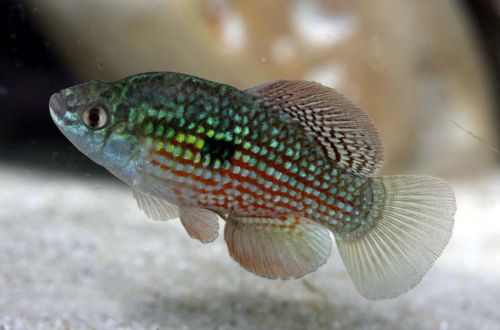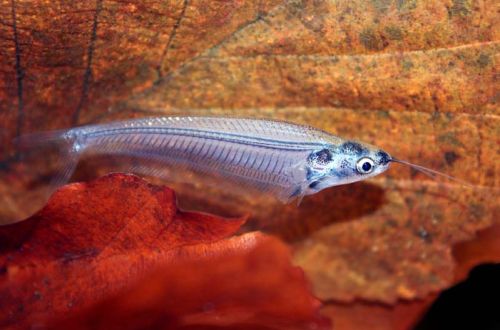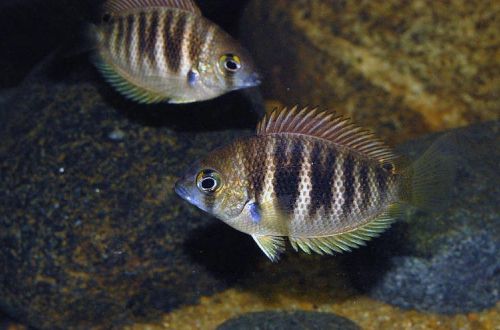
false pristella
False Transparent Tetra or False Pristella, scientific name Hyphessobrycon simulatus, belongs to the Characins family. As the name implies, this species is very similar to another representative of the characins – Pristella, but is not so popular in the aquarium hobby. Easy to keep and breed, able to get along with numerous freshwater species. All this makes it an excellent candidate for a home aquarium.
Contents
Habitat
It comes from South America, is presumably endemic to French Guiana, inhabiting the basins of small rivers from the Maroni in the north of the country to Oyapok in the south. Inhabits streams and rivers, floodplain lakes located among tropical rainforests. It occurs in regions with a slow current, where the channels are littered with fallen leaves, tree branches, and dense vegetation hangs above the surface.
Brief information:
- The volume of the aquarium – from 70 liters.
- Temperature – 20-28°C
- Value pH — 5.0–7.0
- Water hardness – 1–10 dGH
- Substrate type – any
- Lighting – subdued, moderate
- Brackish water – no
- Water movement is weak
- The size of the fish is about 3 cm.
- Feeding – any food of suitable size
- Temperament – peaceful
- Keeping in a group of 8-10 individuals
Description
Adults reach a length of about 3 cm. Sexual dimorphism is weak, it is difficult to distinguish between males and females, the latter may become slightly larger in the spawning state. Outwardly, the fish resemble another related species – Pristella, but unlike it, it has a darker color – gray.
Food
Undemanding to the diet look. The fish will accept a variety of suitable sized foods such as dry flakes, pellets combined with live or frozen daphnia, brine shrimp, small bloodworms, etc.
Maintenance and care, arrangement of the aquarium
The optimal size of the aquarium for a flock of 8-10 fish starts from 70-80 liters. The design is arbitrary, the False Pristella is able to adapt to life in various environments, even to a half-empty tank in which the fish are usually found during the sale.
Often, when decorating, the leaves of some trees are used, placing them at the bottom. With their help, they recreate the conditions occurring in nature. In the process of decomposition, the leaves release tannins, which have an antibacterial and antifungal effect, and at the same time give the water a brown tint. In addition, the leaves serve as the basis for the development of a colony of beneficial microorganisms, such as shoe ciliates, which serve as a valuable source of food for fry.
Successful long-term maintenance of this species depends on a number of factors: quality nutrition, compatible neighbors, composition and quality of water, etc. The latter is understood as maintaining stable water conditions within an acceptable range of temperatures and hydrochemical values. To this end, the aquarium is equipped with all the necessary equipment, as well as regular maintenance procedures are carried out (weekly replacement of part of the water with fresh water, removal of organic waste, etc.).
Behavior and Compatibility
A peaceful schooling fish, perfectly compatible with other freshwater species of comparable size. Do not combine with aggressive and territorial neighbors. It is desirable to maintain the size of the group at least 8-10 individuals, with a smaller number they can become overly shy.
Reproduction / breeding
The False Transparent Tetra has a breeding strategy similar to other characins. The fish randomly scatter their eggs, without the formation of masonry, the eggs are scattered all over the bottom. Parental instincts are not developed, so the juveniles are quickly eaten if they are not transplanted into a separate tank in time.
It should be noted that in the artificial environment of home aquaria, the breeding season is not expressed. In a large flock of fish, spawning will occur throughout the year.
Fish diseases
Diseases inherent in this particular species of fish were not noted. When kept in suitable conditions (high water quality, balanced diet, non-conflict neighbors, etc.), health problems are not observed. The most common cause of disease is the deterioration of conditions leading to immune suppression, which makes the fish susceptible to infections that are invariably present in the surrounding area. When the first signs of an illness are detected (lethargy, exhaustion, refusal of food, lowered fins, etc.), it is necessary to immediately check the main parameters of the water. Often, the restoration of acceptable living conditions contributes to self-healing, but if the fish is too weak or has received obvious damage, medical treatment will be required. For more information on symptoms and treatments, see the Aquarium Fish Diseases section.





